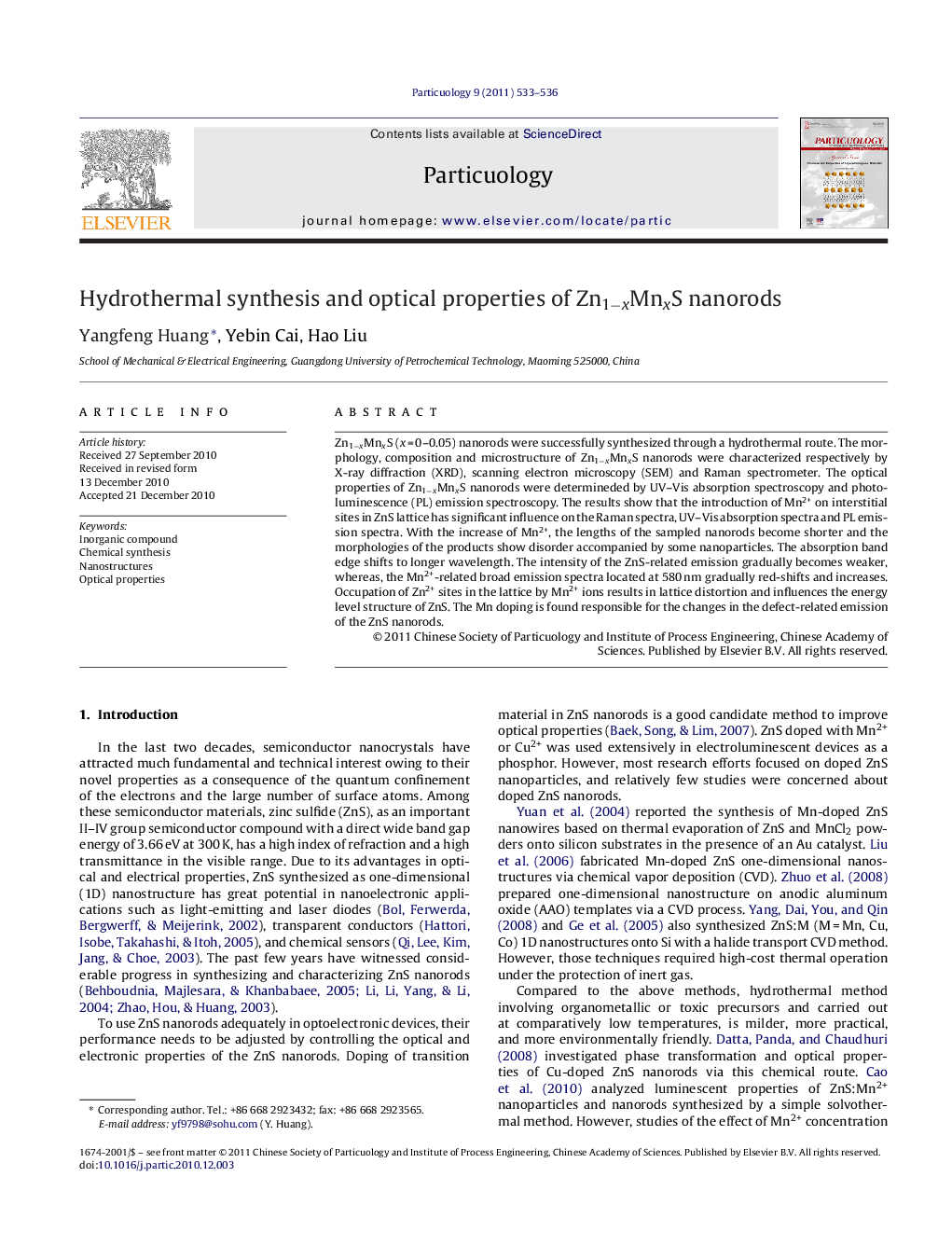| Article ID | Journal | Published Year | Pages | File Type |
|---|---|---|---|---|
| 672367 | Particuology | 2011 | 4 Pages |
Zn1−xMnxS (x = 0–0.05) nanorods were successfully synthesized through a hydrothermal route. The morphology, composition and microstructure of Zn1−xMnxS nanorods were characterized respectively by X-ray diffraction (XRD), scanning electron microscopy (SEM) and Raman spectrometer. The optical properties of Zn1−xMnxS nanorods were determineded by UV–Vis absorption spectroscopy and photoluminescence (PL) emission spectroscopy. The results show that the introduction of Mn2+ on interstitial sites in ZnS lattice has significant influence on the Raman spectra, UV–Vis absorption spectra and PL emission spectra. With the increase of Mn2+, the lengths of the sampled nanorods become shorter and the morphologies of the products show disorder accompanied by some nanoparticles. The absorption band edge shifts to longer wavelength. The intensity of the ZnS-related emission gradually becomes weaker, whereas, the Mn2+-related broad emission spectra located at 580 nm gradually red-shifts and increases. Occupation of Zn2+ sites in the lattice by Mn2+ ions results in lattice distortion and influences the energy level structure of ZnS. The Mn doping is found responsible for the changes in the defect-related emission of the ZnS nanorods.
Graphical abstractZn1−xMnxS (x = 0–0.05) nanorods were successfully synthesized through a hydrothermal route. With the increase of Mn2+, the lengths of the sampled nanorods become shorter and the morphologies of the products show disorder accompanied by some nanoparticles. The Mn doping is found responsible for the changes in the defect-related emission of the ZnS nanorods.Figure optionsDownload full-size imageDownload as PowerPoint slide
